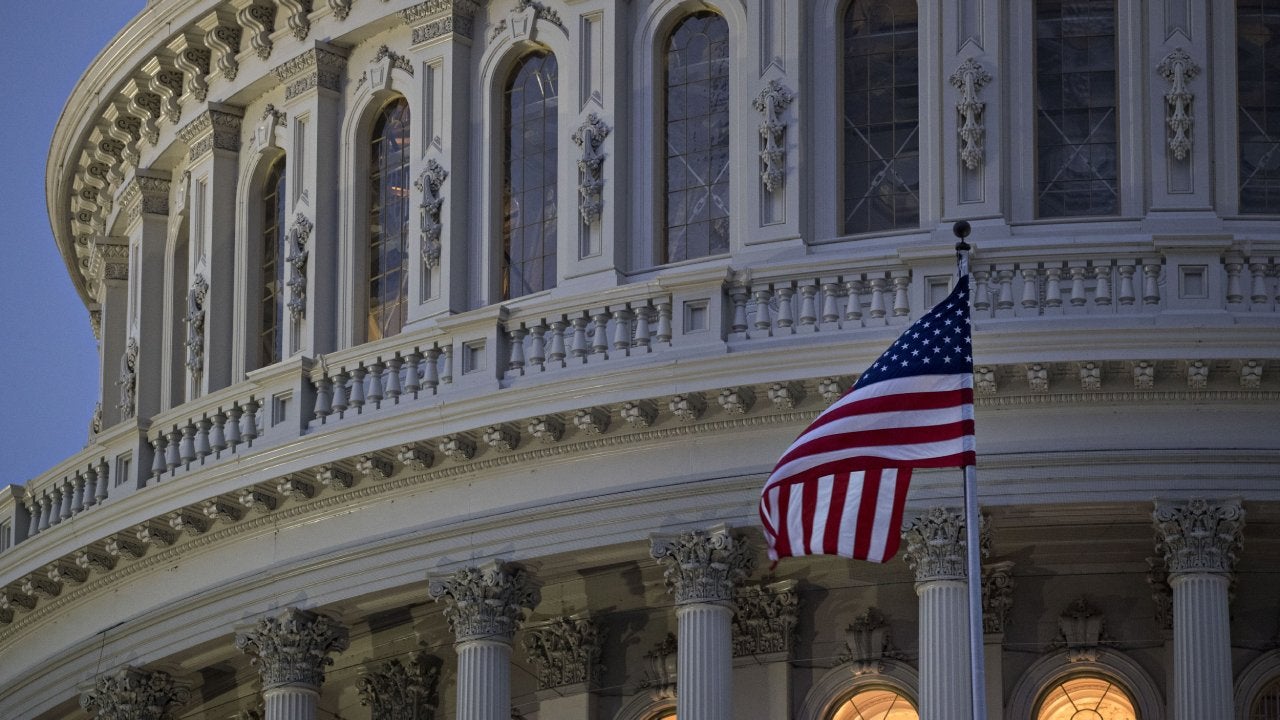What is a subprime mortgage?

Key takeaways
- A subprime mortgage might be an option for a low-credit score borrower who can’t qualify for a conventional mortgage.
- There are laws in place to protect subprime borrowers from many of the risks they faced prior to the Great Recession.
- Subprime mortgages can come with fixed rates, adjustable rates or interest-only terms. They carry higher interest rates and often more onerous down payment requirements.
When you apply for a mortgage, the lender looks through your credit and finances to determine your level of risk as a borrower. Depending on what that review reveals, you might qualify for a subprime mortgage instead of the more common conventional loan.
What is a subprime mortgage?
Subprime mortgages — also known as non-prime mortgages — are for borrowers with lower credit scores, typically below 600, that prevent them from being approved for conventional loans. Conventional loans are widely available and tend to have more favorable terms, such as better interest rates.
Subprime lending was one of the main drivers of the financial crisis that fueled the Great Recession. In the years leading up to the economic meltdown, lenders approved many subprime mortgages that borrowers were unable to pay back. In fact, about 30 percent of all mortgages originated in 2006 were subprime, according to a Credit Union National Association analysis of Home Mortgage Disclosure Act data.
COVID-19 also impacted borrowers’ ability to repay subprime mortgages, giving birth to the CARES ACT. The CARES Act allowed homeowners struggling to make mortgage payments a forbearance of up to 180 days. Since then, the government created the American Rescue Plan to help those behind on their mortgage payments, pledging up to $5 billion in housing vouchers through September 30, 2030.
How do subprime mortgages work?
While subprime home loans still exist today — and might be referred to as a non-qualified mortgage — they are subject to more oversight. They also tend to have higher interest rates and larger down payment requirements than conventional loans.
Subprime mortgages are now regulated by the Consumer Financial Protection Bureau (CFPB), the agency created as part of the Dodd-Frank Wall Street Reform and Consumer Protection Act, which was enacted in response to the subprime crisis.
One of the key rules the CFPB put in place is a requirement that any borrower who obtains a subprime mortgage must undergo homebuyer counseling with a representative approved by the U.S. Department of Housing and Urban Development (HUD).
Government protections of subprime loans
Lenders must underwrite a subprime home loan according to Dodd-Frank standards, including the “ability-to-repay” (ATR) provision that requires a lender to thoroughly assess whether a borrower is capable of paying back the loan.
“If you violate the ATR rule as a lender, you can potentially be sued or be subject to regulatory enforcement,” says Austin Kilgore, director of Corporate Communications at financial firm Achieve. “So lenders that operate in the non-qualified mortgage space have a strong incentive to make sure they are adequately evaluating borrowers much more than the subprime lenders of 15 to 20 years ago did.”
That “non-qualified mortgage” designation limits legal protections for lenders, as well, which has kept many from operating in the space. “Lenders aren’t making the same kinds of subprime loans that they did during the run-up to the Great Recession,” says Kilgore. “The biggest reason is regulatory issues.”
Subprime vs. prime mortgages
Both subprime and prime mortgages serve the same purpose: provide funds for a home purchase. However, they are very different in terms of borrower profile and structure.
Subprime vs. prime mortgage requirements
Credit score |
Down payment |
Interest rate |
|
|---|---|---|---|
| Prime mortgage requirements | 700+ | As low as 3% | 7% |
| Subprime mortgage requirements | > 560 | As much as 25%-35% | 10% or higher |
Compared to subprime mortgages, prime mortgages are available to highly qualified borrowers who pose little risk to lenders.
When lenders advertise rates “as low as” a certain percentage, those rates are typically reserved for borrowers who are candidates for prime mortgages, with good to excellent credit scores, from 700 on up —those who qualify for a conventional loan.
With a prime mortgage (a conventional loan), the down payment requirements can be relatively small, too — as low as 3 percent or 5 percent of the home’s price.
The interest rates on subprime mortgages, on the other hand, can be much higher — often more than 10 percent. Lenders typically ask for a larger down payment, as well, such as 25 percent to 35 percent, to avoid loaning a large sum to a riskier borrower.
Subprime vs. prime mortgage example
Because subprime mortgages are for borrowers with low credit scores, these loans raise risk for the lender. To make up for that risk, the lender charges higher interest rates and fees than you might see on a conventional loan. With a higher rate, you’ll pay significantly more overall for a subprime mortgage:
Prime |
Subprime |
|
|---|---|---|
| Home price | $400,000 | $400,000 |
| Down payment | $12,000 (3%) | $100,000 (25%) |
| Interest rate | 7% | 10% |
| Loan term | 30 years | 30 years |
| Monthly payment | $2,581 | $2,632 |
| Interest total | $541,295 | $647,777 |
Types of subprime mortgages
Some of the types of subprime mortgages you can get include:
Subprime fixed-rate mortgage
A subprime fixed-rate mortgage works just like a conventional fixed-rate mortgage in that the borrower gets a set interest rate and the monthly payment remains the same for the entire loan repayment period.
The difference is that subprime fixed-rate mortgages sometimes have longer terms, such as 40 years, compared to the typical 15 or 30 years for a conventional fixed-rate loan.
Subprime adjustable-rate mortgage (ARM)
There are also subprime adjustable-rate mortgages, or ARMs, such as the 3/27 ARM, in which the borrower gets a fixed interest rate for the first three years, then the rate floats for the remaining 27 years.
The adjustments are based on the performance of a market index plus a margin. Most lenders have a cap on how much your rate can increase, but if you can’t make the peak monthly payment, you could be at risk of default.
Interest-only loan
With an interest-only loan, the borrower pays only interest during the first few years, typically seven or 10. This could mean smaller monthly payments at first, but no initial payoff of the loan principal, and delayed equity.
Dignity mortgage
With a dignity mortgage, the borrower makes a down payment of at least 10 percent and takes on a high interest rate. If the borrower makes timely payments for a certain period — typically five years — the amount paid toward interest gets used to lower the loan balance, and the interest rate is lowered to the prime rate, or the rate that most large banks charge the most creditworthy borrowers. (This rate is largely determined by the federal funds rate set by the Federal Reserve.) This type of mortgage could be beneficial if you can afford to make larger payments during the beginning of your term.
Pros and cons of a subprime mortgage
When considering a subprime mortgage, consider its pros and cons, including:
Pros of a subprime mortgage
- Aids borrowers with low credit: If your credit really needs work, a subprime mortgage might be your only option to get into a home.
- Flexibility: Unlike conventional loans, which are fairly cookie-cutter, subprime loans often have unique structures, such as an interest-only period, that might work in your favor in the short term.
Cons of a subprime mortgage
- Expensive: Compared to conventional loans, subprime mortgages have considerably higher interest rates, which increases your all-in costs. You’ll likely need to come up with a hefty down payment, as well — something that might not be possible if you’re working on improving your credit.
- Limited lender options: With a subprime mortgage, you’re not just limited in loan choice; you’ll also be limited in terms of lenders to compare.
Alternatives to a subprime mortgage
Other options you might want to consider besides a subprime home loan include:
- FHA loans – If your credit score is at least 580, consider an FHA loan with a down payment of 3.5 percent. If your credit score is between 500 and 579, you can qualify for an FHA loan with 10 percent down.
- VA loans – If you’re a veteran, active member of the armed forces or surviving spouse, look into VA loans. Guaranteed by the U.S. Department of Veterans Affairs, these loans require no down payment and could have lower credit score requirements.
- USDA loans – USDA loans are designed for low- to moderate-income borrowers in rural designated areas. (Some qualifying locations are actually near large metro areas.) While some lenders might have a credit score minimum for USDA loans, others might have relatively lenient standards that can help you qualify.
Another alternative is to simply wait. Continue paying your bills on time, and focus on taking crucial steps to improve your credit. You might want to buy a house now, but you also don’t want to get stuck paying an overwhelmingly high interest rate.
Is a subprime mortgage right for me?
A nonprime mortgage isn’t ideal – you’ll pay more interest over the life of the loan, and you might have to come up with a hefty down payment. However, if a subprime mortgage is the only way you can become a homeowner, this type of loan might be worth the downsides. Consumer protections are more robust now than they were during the subprime go-go days of the mid-2000s.
Subprime mortgage FAQ
-
There are lenders that specialize in subprime mortgages, like New American Funding and Griffin Funding. Do your research when looking for a subprime lender, including reading customer reviews online to learn more about whether the lender has a good track record. You can also work with a mortgage broker to find lenders that specialize in subprime home loans.
-
Once you find a subprime mortgage lender, you’ll want to apply as you would for a conventional mortgage. It means you’ll need to supply proof of income via bank statements, W-2s and tax returns. Once you have supplied all the information requested, your lender determines if you’re a viable candidate for a subprime mortgage.
-
Subprime interest rates can be more than 10 percent, while the national average for conventional mortgage rates is around 7 percent at the time of this writing.
-
You won’t need to pay private mortgage insurance (PMI) since subprime mortgages don’t conform to Fannie Mae or Freddie Mac standards, but your lender may impose other requirements to mitigate its risk.







